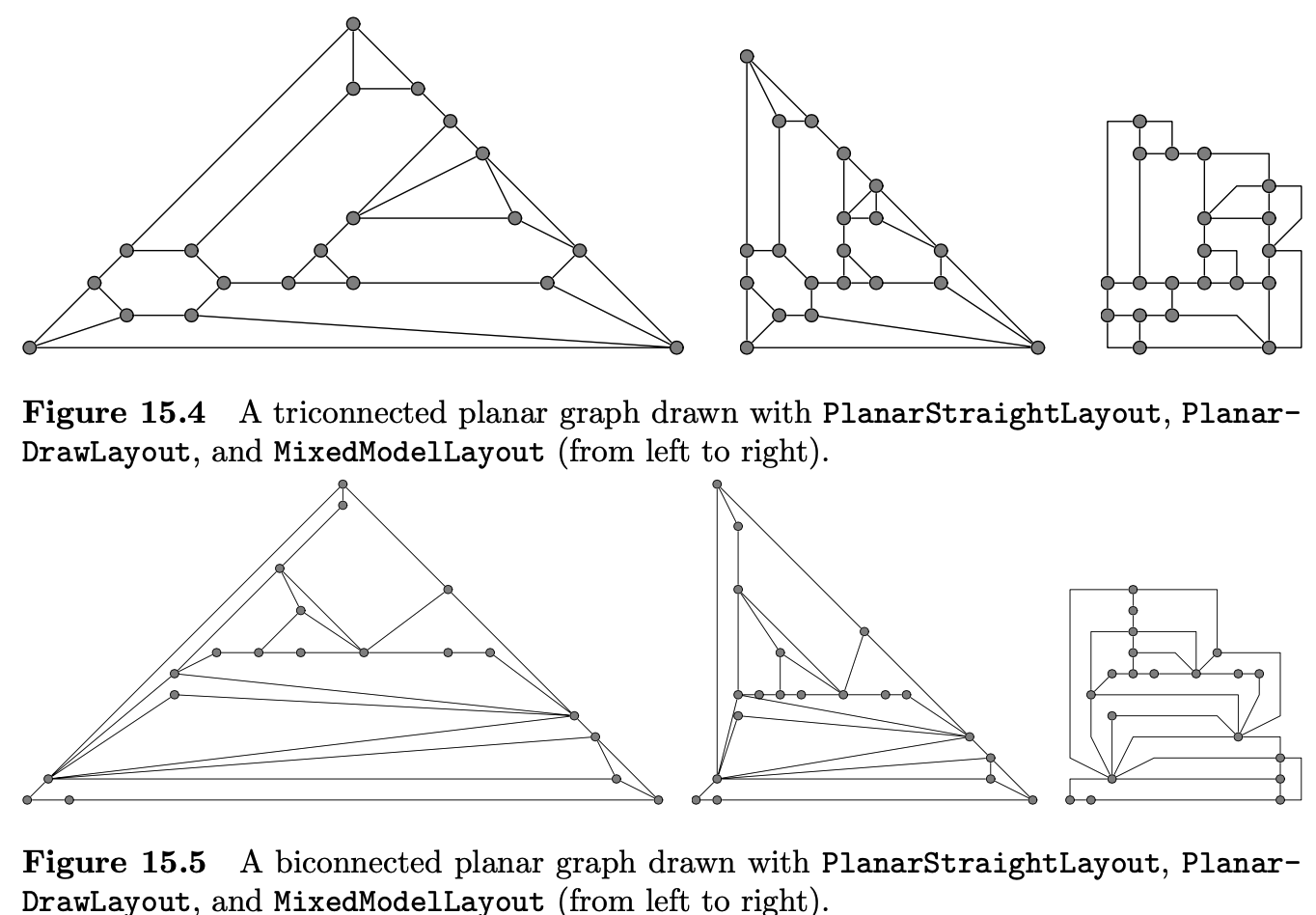I use PlantUML to visualize software components or ideas for blog posts. Often, the layout becomes unwieldy and a lot of time goes into tweaking it. This post is about the current state of diagram layouts when using PlantUML.
Bad layouts can make diagrams unusable
Producing good-looking diagrams using PlantUML is notoriously difficult; this has been known for a while, e.g.,
-
Graphviz is not good enough: the original poster seems to think that the issue lies in the underlying graph drawing tool, namely Graphviz, a mature (30+ years old) graph visualization package. He suggests that by using the Open Graph Drawing Framework (OGDF), PlantUML could generate better layouts.
-
Diagrams are a mess: shows an example of how the diagram becomes a mess due to the terrible layout. It seems that this happens more often for diagrams with edge crossings, sometimes referred to as non-planar graphs, that just means that they cannot be drawn on a plane without edge crossings.
What is the problem with PlantUML’s layouts?
I have tried to understand the problem and see how hard it would be to improve the situation. I expected that it would not be trivial, otherwise it would have been done already.
It seems that the issue could arise due to the layout options that PlantUML uses when interacting with Graphviz, however, it’s not super clear to me how this happens. I can think of the following possibilities:
- Graphviz itself cannot produce better layouts. Somehow I doubt that this is the case given the maturity of the library. However, it remains a possibility that modern layout algorithms are not part of Graphviz.
- Graphviz can produce better layouts but PlantUML instructs Graphviz to draw the diagram using options that result in a suboptimal layout. This seems plausible given that diagrams created with OGDF can be drawn using Graphviz.
The Open Graph Drawing Framework (OGDF)
The layout examples in the OGDF pre-print are quite impressive:

When using the OGDF C++ framework, graphs are defined via building the required data structures like a Graph, GraphAttributes, then it’s possible to apply different types of layouts. Here’s a simplified example of what the process of building a graph (full example):
Graph G;
GraphAttributes GA(G,
GraphAttributes::nodeGraphics |
GraphAttributes::nodeTemplate);
SugiyamaLayout SL;
SL.setRanking(new OptimalRanking);
SL.setCrossMin(new MedianHeuristic);
OptimalHierarchyLayout *ohl = new OptimalHierarchyLayout;
SL.setLayout(ohl);
SL.call(GA);
GraphIO::write(GA, "output.gml", GraphIO::writeGML);
GraphIO::write(GA, "output.svg", GraphIO::drawSVG);Drawing an OGDF diagram with Graphviz
OGDF can generate output in GML and SVG formats. SVG files can be opened by any modern web browser, for GML files I needed to use gml2gv to convert them to DOT files and eventually into SVG files using dot, both utilities are part of Graphviz:
# Convert GML into DOT
gml2gv -o graph.dot graph.gml
# Convert DOT into SVG
dot -Tsvg graph.dot > graph.svg
This is what makes me think that the issues with PlantUML layouts may not be due to Graphviz.
GOTCHAs generating SVG files
I didn’t spend much time investigating this, but I ran into two problems while playing around with OGDF trying to generate SVG files from the code examples:
- not all GML files can be converted to DOT files, some syntax error
- sometimes OGDF will refuse to create an SVG file if some conditions are not met, e.g., there are edge crossings
Loading GML files to customize the layout
The OGDF sources have examples showing how to load a GML file, customize the layout and then generate a GML or SVG file for the updated diagram. This is roughly the approach suggested in Graphviz is not good enough, namely, to extend PlantUML so that it can generate GML files as output and use OGDF to improve the layout afterwards. Just a reminder here that not all GML files can be converted to DOT files, see GOTCHAS.
PlantUML layout hints
PlantUML does provide specific syntax to control the layout for some elements in a diagram, however, there are times when these layout hints are ignored, others where the result is not very good, and sometimes their effects are not intuitive.
How I deal with PlantUML’s layout limitations
In my experience, making multiple smaller focused diagrams plus tweaking the layout pays off quicker than creating a more complex diagram and then tweaking its layout. The time spent tweaking the layout of a diagram grows faster than linearly with respect to the number of elements shown.
This is a nice exercise in diagram making, since it forces me to really refine it and only show those elements that are truly relevant.
Accuracy and simplicity: a diagram’s goal
I also try to be more conscious about my goals: am I trying to show an accurate picture, or to emphasize one important thing? Some diagrams are only really useful if they are accurate, but in other cases, sacrificing accuracy to bring attention to the really important stuff really pays off. When in doubt, make multiple versions of the diagram, PlantUML makes this super easy.
Possible paths to improve diagram layouts
Given my limited knowledge of the tools involved, there are a couple options I can think of on how to improve the layouts generated by PlantUML:
- Extend PlantUML so that Graphviz uses better layout options 1
- Integrate PlantUML and OGDF 2, that is, use the PlantUML syntax but create the Graph using OGDF and let Graphviz draw the diagram, or OGDF export the GML/SVG files
- Extend PlantUML to generate GML files 3 that can be post-processed with OGDF to improve the layout and generate an updated GML/SVG file
Related links
- PlantUML website
- PlantUML forum: Graphviz is not good enough
- PlantUML GitHub issues: Diagrams are a mess
- Wikipedia: Planar graph
- Open Graph Drawing Framework
- OGDF GitHub repo
- PlantUML output formats
- Graphviz
- DOT language
- dot command
- gml2gv command
- PlantUML Hitchhiker's guide
Footnotes
-
Some investigation is required to learn when Graphviz can generate better layouts ↩
-
Requires knowledge on how to integrate a C++ library with the Java-based PlantUML code base ↩
-
This is the approach suggested in Graphviz is not good enough ↩
